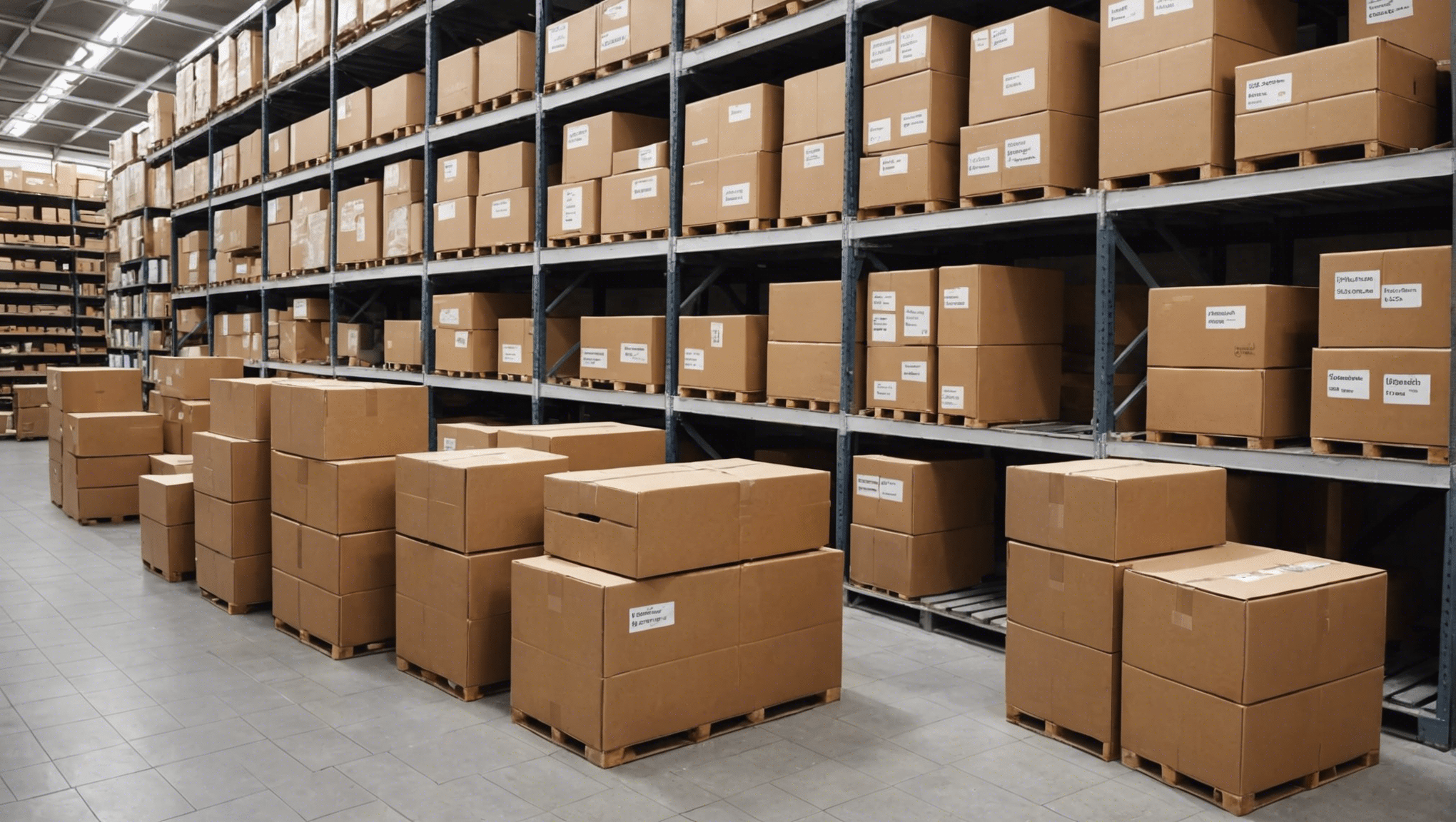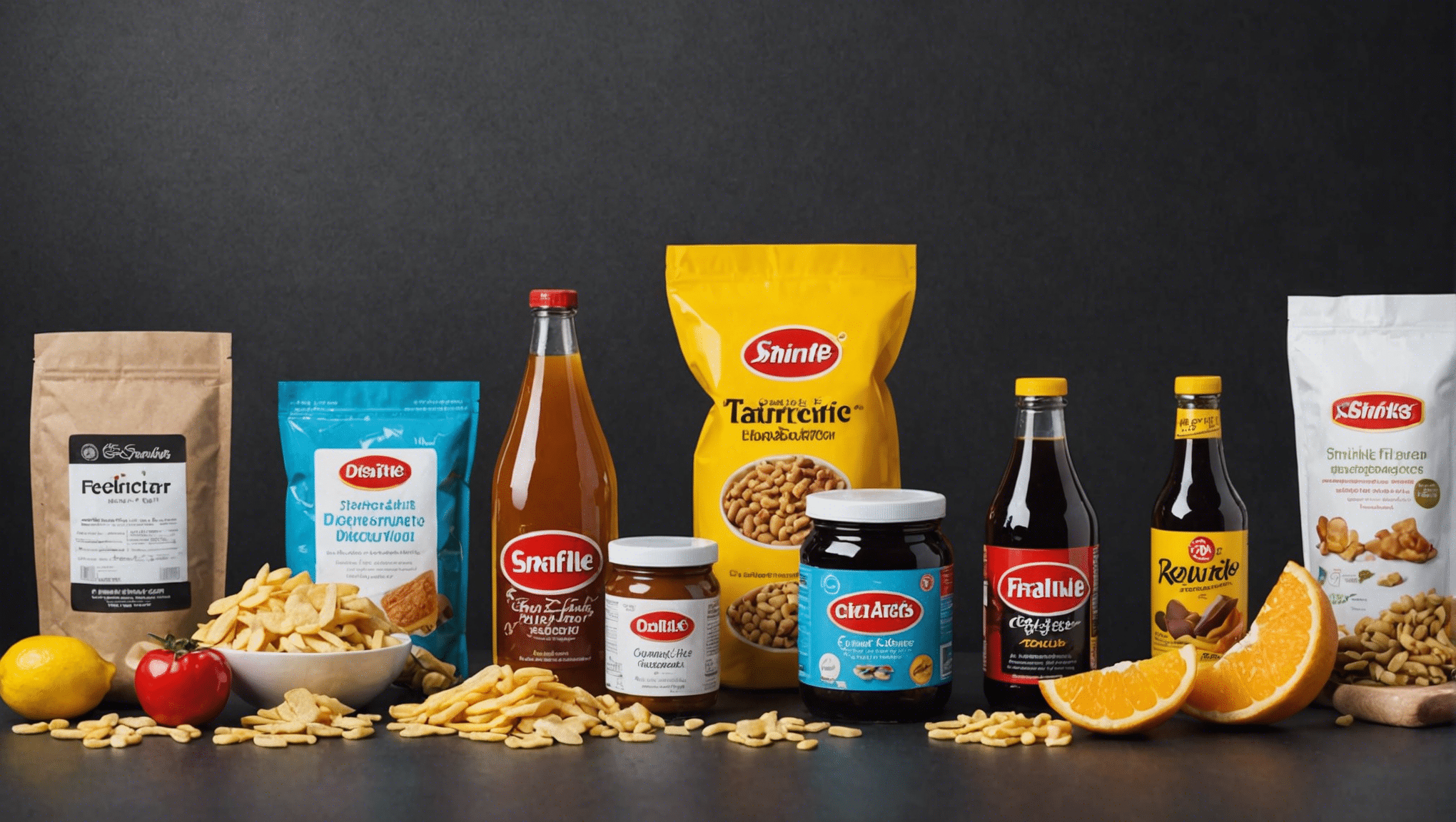Sneaky Scale-Back: Unmasking the Subtle Art of Shrinkflation in Consumer Products

Find out how companies are using shrinkflation to discreetly reduce the size of their products without you noticing. What does this mean for your portfolio? Stay alert and informed!
Shrinkflation: How companies discreetly reduce product size without you noticing?

Behind the scenes of shrinkflation
Shrinkflation, an increasingly common practice in the corporate world, consists in discreetly reducing the size of products while keeping their price unchanged. This phenomenon can go unnoticed by the consumer, who is not always aware of this subtle change.
How to spot shrinkflation?
There are several tricks to detecting shrinkflation. Firstly, it’s important to compare the price with the weight or volume of the product. If the latter remains the same, but the quantity has decreased, there’s a good chance that shrinkflation is at play. Likewise, keep an eye out for changes in design or packaging that could conceal a reduction in size.
Corporate strategies
Companies use shrinkflation to maintain profit margins while avoiding overt price increases. By reducing portions, they hope to limit the impact on consumer perception and thus avoid a negative reaction.
Consequences for the consumer
For the consumer, shrinkflation can mean a loss of purchasing power. Indeed, by paying the same price for a smaller product, they spend more to obtain the same quantity as before. This can have an impact on household budgets, requiring them to adjust their spending.
How to react to shrinkflation?
To counter shrinkflation, it’s important to remain vigilant and compare prices by the kilo or liter rather than by the unit. In addition, choose brands that offer stable products in terms of size and price. Finally, don’t hesitate to express your dissatisfaction with these practices to make your voice heard as a consumer.
By being informed and attentive, it’s possible to avoid the pitfalls of shrinkflation and make informed choices when making everyday purchases.
The shrinkflation phenomenon

What is shrinkflation?
Shrinkflation is a common phenomenon in the retail sector, but little known to the general public. It is characterized by a discrete reduction in the quantity or quality of a product, while keeping the price unchanged. In other words, companies reduce the size or quantity of a product without lowering the advertised price, which can be misleading for consumers.
The causes of shrinkflation
A number of factors can explain why companies resort to shrinkflation. These include rising production costs, raw materials and transport costs. Rather than visibly raising prices, manufacturers prefer to reduce portions in order to maintain their profit margins. This strategy enables them to limit the impact on consumer perception while guaranteeing their profits.
Shrinkflation can have significant consequences for consumers. Firstly, they may feel cheated or cheated when they realize that the quantity of the product has decreased without the price having changed. In addition, it can affect their purchasing power, as they get less for the same amount spent. Finally, shrinkflation can lead to confusion when comparing prices between different brands or products.
How to spot shrinkflation?
To avoid falling victim to shrinkflation, it’s important to pay close attention when shopping. Here are a few tips on how to spot shrinkflation:
– Compare the price per kilo or liter to see if a variation has occurred.
– Regularly check product labels for changes in size or quantity.
– Check consumer forums and specialized websites for information on brand practices.
How to react to shrinkflation?
If you suspect shrinkflation in a product you buy regularly, here are some tips on how to react:
– Express your dissatisfaction to the manufacturer or distributor.
– Opt for products in bulk or on special offer to try and avoid the phenomenon.
– Choose brands that are transparent about their practices and pledge not to use shrinkflation.
In conclusion
Shrinkflation is a reality with which many consumers are confronted without necessarily being aware of it. By remaining vigilant and adopting enlightened purchasing behavior, you can limit its impact on your budget and make more informed choices. Don’t hesitate to share your findings with other consumers to help them spot shrinkflation practices.
Techniques used by companies

Companies face a variety of challenges in maintaining profitability in a constantly changing economic environment. Shrinkflation is one of the techniques used to optimize costs and maximize profits.
Change of formats and packaging
A common approach to shrinkflation is to subtly change product formats or packaging. By slightly reducing the quantity or size of products without significantly reducing price, companies can adjust production costs and increase profit margins.
Substitution of ingredients or raw materials
Some companies opt to substitute less expensive ingredients or raw materials in order to cut costs. This practice may go unnoticed by consumers, but it has a direct impact on company profitability.
Modification of recipes or formulations
Another shrinkflation strategy is to discreetly modify product recipes or formulations. By adjusting ingredient quantities or using cheaper alternatives, companies can maintain their selling prices while reducing production costs.
Lighter or less elaborate packaging
Packaging optimization is also a frequent shrinkflation practice. By using lighter or less elaborate packaging, companies can reduce packaging and transport costs, while preserving the appearance and perceived quality of their products.
Subtle communication with consumers
Finally, companies adopt subtle communication strategies to introduce shrinkflation without arousing consumer suspicion. Through skilful marketing campaigns or specific spotlights, companies manage to minimize negative reactions and maintain customer loyalty.
All in all, shrinkflation is a widespread practice in the business world, enabling companies to optimize costs and increase profits. However, it is essential for consumers to be aware of these techniques in order to make informed purchasing decisions.
The consequences for consumers
Shrinkflation: The consequences for consumers
Shrinkflation, the practice of reducing the quantity of a product while maintaining its price, has direct implications for consumers’ everyday lives. Here’s an overview of the consequences:
Less for the same price
One of the most obvious impacts of shrinkflation for consumers is that they end up with less product for the same price. For example, a packet of potato chips may look the same on the outside but contain fewer potato chips inside, forcing consumers to spend more to get the same quantity as before.
An impacted budget
This reduction in quantity for an unchanged price can have a real impact on consumers’ budgets. Indeed, if everyday products are progressively shrinking without a corresponding drop in price, monthly expenditure can rise subtly without consumers necessarily being aware of it.
Loss of confidence
Shrinkflation can also lead to a loss of consumer confidence in brands. Feeling cheated into buying a product whose quality has declined without the price having been adjusted can affect customer loyalty. This loss of trust can lead consumers to turn to other, more transparent brands.
Difficulty of comparison
Shrinkflation can make it difficult to compare prices between different brands or products. When containers change, it becomes more complex for consumers to assess the best value for money. This can lead them to make less informed and potentially less financially advantageous choices.
In conclusion, shrinkflation has significant implications for consumers, impacting their purchasing power, their perception of brands and the way they manage their budgets. It is essential for consumers to be alert to changes in product contents, and to stay informed in order to make informed choices.
How to spot shrinkflation
What is shrinkflation?
Shrinkflation is a strategy used by companies to maintain product prices while reducing their size or quantity. In other words, instead of raising prices, manufacturers discreetly reduce product quantity or quality, which can mislead consumers.
How to spot shrinkflation
1. Compare formats and prices
As part of your regular shopping routine, take the time to compare the sizes of products you frequently buy. If you notice a change in size without a change in price, shrinkflation may be at work.
2. Read labels carefully
Pay particular attention to product labels and descriptions. Some manufacturers discreetly mention changes in size or quantity, but this information can sometimes be difficult to spot. Be on the lookout for any indication of product modification.
3. Keep an eye on promotions
Promotions and special offers can be a good indicator of shrinkflation. If a product is often on promotion, or if discounts seem to be more frequent, this may mean that its size has been discreetly reduced to maintain an attractive price.
4. Compare with other brands
Don’t hesitate to compare products from different brands to spot any differences in size or quantity. If a product seems smaller than its competitors for a similar price, it may have undergone shrinkflation.
Stay alert to shrinkflation
By paying attention to the details of the products you buy, you can more easily spot cases of shrinkflation. This practice can have a long-term impact on your purchasing power, so it’s essential to stay informed and make informed choices when making your purchases.
Recourse options for consumers
Know your rights as a consumer
When consumers notice a shrinkflation on a product they buy regularly, it’s important to know their rights. In France, companies are required by law to provide clear and transparent information on the products they sell, including the quantity or weight of the product. If this information is modified without prior notification, consumers can assert their rights.
Check product labeling and composition
To guard against shrinkflation, it’s essential to check product labelling carefully. By comparing old and new packaging, consumers can detect any reduction in product quantity. In addition, it’s a good idea to take a look at the product’s composition to ensure that no essential ingredients have been replaced by inferior substitutes.
Contact the company’s customer service
If in doubt, or if shrinkflation is found, consumers can contact the company’s customer service department. It’s advisable to express your concerns in a clear, well-argued manner, highlighting the changes observed in the product. Customer service will then be able to provide explanations or solutions to remedy the situation.
Turn to consumer associations
If dialogue with the company fails to resolve the shrinkflation problem, consumers can turn to consumer associations. These organizations are there to defend the rights of consumers and help them find solutions in the event of a dispute with a company. They can provide legal support and advice on asserting rights.
Report the case to the appropriate authorities
As a last resort, if the shrinkflation persists and previous remedies have been unsuccessful, the consumer may decide to report the case to the relevant authorities. In France, the Direction générale de la concurrence, de la consommation et de la répression des fraudes (DGCCRF) is the body responsible for ensuring that consumer rights are respected. By reporting a case of shrinkflation, consumers help to ensure that current regulations are enforced, and that the rights of all consumers are protected.
By acting proactively and asserting their rights, consumers can protect themselves against the effects of shrinkflation and encourage companies to adopt more transparent and fair practices.
Corporate responsibility in the face of shrinkflation
Impact of shrinkflation on consumers and businesses
Shrinkflation, the practice of reducing the size or quantity of a product while maintaining its price, has a direct impact on consumers. Consumers can feel cheated by paying the same price for an item of inferior quality. What’s more, it can affect consumer confidence in companies that use this strategy.
Transparency and communication
Faced with this situation, companies have a crucial role to play. It is essential for them to adopt a policy of transparency towards consumers. This means communicating clearly about the changes made, explaining the reasons behind the shrinkflation.
Respecting customer loyalty
Companies also have a responsibility to respect customer loyalty. By offering products of consistent quality and maintaining a fair ratio between size and price, companies can retain consumer trust. This means not abusing shrinkflation to maximize profits at the expense of customers.
Business ethics
Beyond simple profitability, companies need to consider business ethics in their practices. It is essential to maintain a relationship of trust with consumers, offering them honest and transparent products. A company’s sustainability depends in part on the trust and satisfaction of its customers.
Social responsibility
Finally, corporate social responsibility also encompasses the way in which companies manage shrinkflation. It is necessary to strike a balance between profitability and respect for consumers, by adopting ethical and sustainable practices. Companies that demonstrate responsibility and transparency are likely to win long-term customer loyalty.